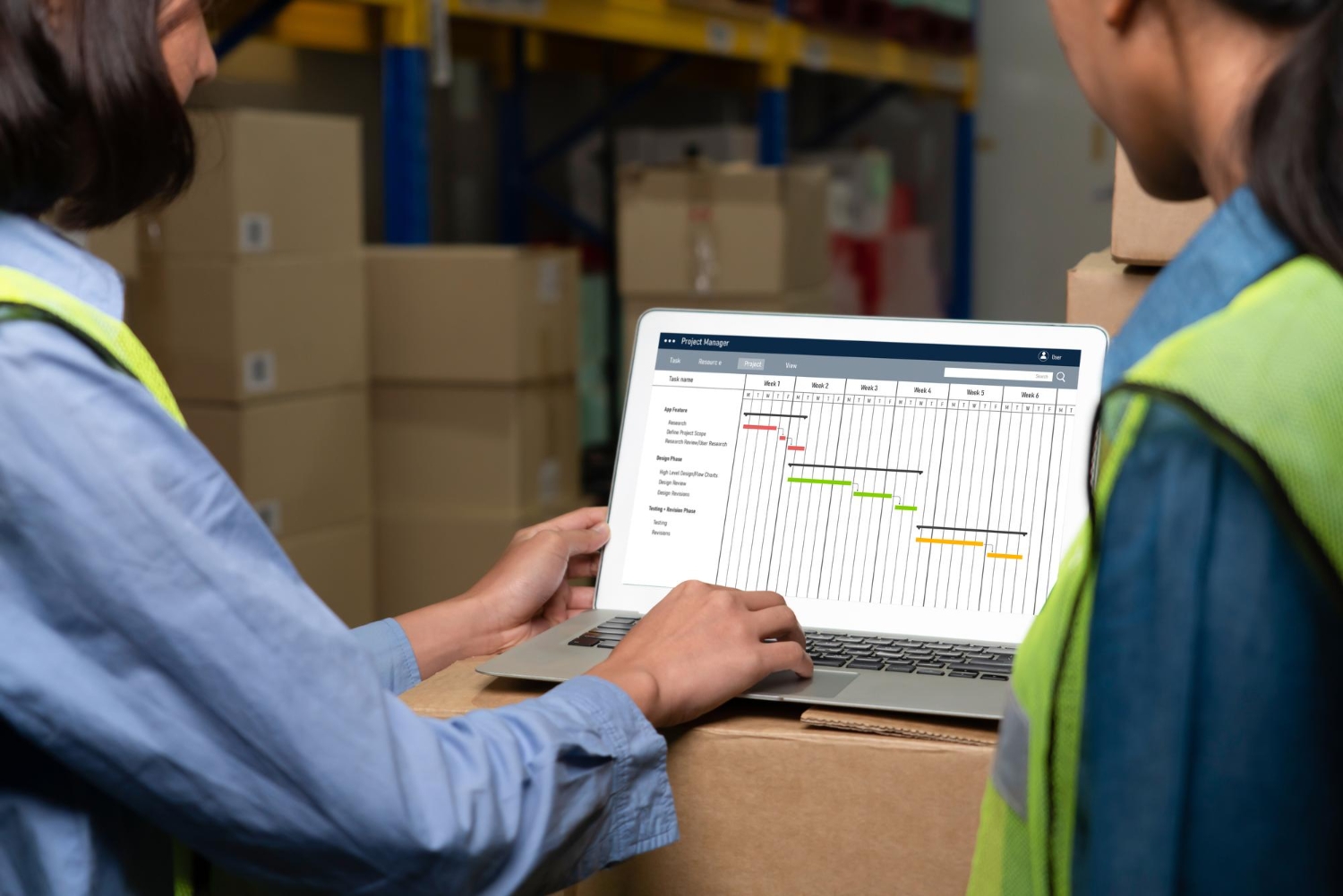
Running a small business comes with its challenges, but having a robust inventory system can make all the difference. Keeping on top of your inventory will help you reduce expenses, increase customer satisfaction, and free up time to focus on growing your company. This article will guide you through choosing and configuring the ideal inventory system for small business success. Let’s get started!

How to Create an Inventory System for Small Business
Establishing an inventory system for your small business need not be daunting. By following a clear, step-by-step approach, you can design a solution that fits your specific requirements. This involves understanding your business goals, setting up product categories, selecting tracking tools, and training your team. Let’s dive into the details:
Step 1: Understand Your Business Needs
Understanding the type of business you run and the nature of your products is the first step. Do you handle large items, perishable goods, or high-value assets? Whether it’s a barcode inventory system for small business or something more advanced, knowing your needs will help you select the best inventory control method. Take time to identify your main challenges and what needs to be managed. For example, a system with real-time expiry date tracking is crucial for perishable goods.
Step 2: Set Up Product Categories
Effective inventory management starts with thoughtful organisation. By creating clear product categories, you enable your team to quickly locate items, improving overall efficiency and accuracy. Divide your inventory into categories based on product type, size, or other relevant characteristics. For instance, a clothing retailer might categorise products by type (shirts, trousers, dresses), size, and colour. This structured categorisation will enhance workflow and simplify restocking and reporting. It also makes analysing stock data, identifying trends, and pinpointing best-sellers much easier.
Step 3: Choose the Right Tools for Tracking
Once your products are categorised, the next step is to select the right tools to track them efficiently. Managing inventory requires the use of suitable tools to ensure accuracy and control. You can sort your merchandise based on product type, size, or other pertinent qualities. For example, a clothing store might classify items according to type—shirts, trousers, dresses—as well as size and colour. This kind of organised classification enables easier restocking and reporting while boosting overall efficiency. Categorising also helps in analysing stock data, recognising trends, and identifying your best-sellers.
Step 4: Implement and Test
After selecting the right tools, it’s time to implement them and run tests. Start with a small inventory batch before scaling up to your entire product range to work out any issues. Testing will help identify if adjustments are needed to better fit your needs or improve efficiency. For instance, you might discover that the system isn’t integrating well with your point-of-sale programme or that barcode labels need to be more durable. Identifying such problems early will save you time and effort in the long run.
Step 5: Train Your Team
Following successful testing, it’s essential to train your team on the system. Make sure everyone understands how to track items, categorise products, and use the tools effectively. A great system is only as good as the people using it. Consider creating training materials or conducting hands-on sessions to ensure everyone is comfortable with the process. Regular refresher courses can also be beneficial, especially when introducing new features or updating processes.
Inventory Management System for Small Business

An inventory management system is a set of tools and processes that allow businesses to track inventory levels, orders, sales, and deliveries. It ensures that businesses have the right amount of stock at the right time, preventing overstocking or stockouts. There are various types of inventory systems to consider, from manual processes to fully automated software that integrates with other business systems.
Manual Inventory Systems
Manual inventory systems involve using basic spreadsheets or similar tools to record inventory. For example, a small craft business producing handmade goods might find a manual method suitable due to the low volume and simplicity of its inventory. However, as the business grows, switching to an automated approach becomes essential. While manual systems are cost-effective and easy to implement, they can be time-consuming and prone to human error. This may work for very small businesses, but scaling up would prove difficult. Additionally, the lack of real-time data in manual systems can cause delays in detecting overstocking or stockouts, impacting customer satisfaction and cash flow.
Automated Inventory Systems
Automated systems use specialised software to track and manage stock levels. By integrating with sales systems, these tools ensure up-to-date inventory data at all times. Automated inventory management benefits are plentiful. For growing businesses handling larger volumes of products, these systems save time and reduce errors. While the initial investment might be a barrier for some, automated systems typically include features like low-stock alerts, sales analytics, and integration with accounting software, providing a comprehensive solution for business operations.
Inventory Tracking System for Small Business
A small business inventory tracking system ensures that you know the location and quantity of your items at any given time. For instance, a retail store might use a barcode system to track items from the moment they arrive in the store until they are sold. This reduces the risk of over-ordering or stockouts and enhances customer service by providing accurate stock information. Tracking allows businesses to avoid stockouts or overstock, maintain accurate counts, and identify trends that could be costing money.
Benefits of Inventory Tracking
Small businesses can gain several advantages from inventory tracking systems:
- Accuracy: Using barcodes or RFID significantly reduces human errors. This accuracy enables better decision-making, such as discontinuing underperforming products or restocking popular items.
- Efficiency: Tracking streamlines processes by reducing the time required for manual counts. This is particularly important during peak business periods, such as holidays or sales events, when speed and accuracy are crucial.
- Insights: Tracking software provides valuable insights into stock movement, helping identify underperforming products and best-sellers. These insights inform marketing strategies, promotions, and even decisions about discontinuing certain products.
How Inventory Tracking Works
Inventory tracking involves assigning unique identifiers to each item in your inventory, such as QR codes, RFID tags, or barcodes. Each time a product is sold, returned, or moved, the system updates in real-time to reflect the changes. This real-time visibility ensures strict inventory control and helps identify discrepancies quickly.
Cloud-Based Inventory Management Systems for Small Business
Like other technologies, inventory management has evolved. Cloud-based inventory management systems allow small businesses to track their inventory from anywhere, at any time, in real-time. With itemit’s cloud-based system, you can monitor stock levels, update records, and manage orders without needing to be in the office.
Benefits of Cloud-Based Systems
Remote Access: Whether working from home or attending a trade show, cloud-based systems let you manage your inventory from anywhere. This is especially useful for business owners who travel frequently or have multiple locations.
Scalability: As your business grows, so do your inventory needs. Cloud solutions offer high scalability, allowing you to add users and services as needed. Whether you open new locations or expand your product range, your inventory management system can grow with you.
Automatic Updates: Cloud-based systems usually update automatically, ensuring you always have the latest features and security patches without manual intervention.
Cost-Effective: Cloud solutions typically operate on a subscription basis, making them more affordable than maintaining in-house hardware. Since the service provider handles everything online, there is no need for expensive servers or IT maintenance.
Considerations When Choosing a Cloud-Based System
When selecting a cloud-based system, consider the following:
Integration: Ensure the system integrates with your existing accounting and sales tools to streamline processes and reduce manual data entry.
User-Friendly Interface: Choose software that is easy to navigate so your team can learn it quickly. A simple interface means less time spent on training and fewer mistakes.
Customer Support: Opt for a provider with strong customer support to resolve issues as they arise. Look for services that offer 24/7 assistance, especially during peak periods.
Inventory Control System for Small Business

An inventory control system focuses on optimising stock levels, reducing waste, and ensuring you have the right amount of inventory without overstocking. Inventory control is essential for managing costs and improving cash flow.
Minimising Waste and Preventing Loss
Effective inventory control minimises waste from damage, obsolescence, and spoilage. Regular financial audits and accurate documentation help maintain valuable stock. Systems that suggest reorder levels or highlight slow-moving items can prevent unnecessary expenses. For example, inventory control systems can trigger alerts when products are near expiry, allowing you to offer discounts to clear stock before it becomes unsellable.
Optimising Stock Levels
A good inventory control system helps accurately forecast demand, ensuring appropriate stock levels throughout the year. This reduces stockouts and improves customer satisfaction. Maintaining optimal stock levels also minimises costs and maximises sales opportunities. Understocking can lead to lost sales, while overstocking ties up capital in unsold items.
Tools for Effective Inventory Control
- Reorder Point Formula: This formula calculates the ideal time to reorder a product based on lead time and average daily usage to avoid stockouts.
- ABC Analysis: Categorise inventory into three groups (A, B, and C) based on value and frequency of use. Group A items are high-value, Group B are moderate, and Group C are low-value but high-quantity items. This helps focus on the most critical stock.
- Just-In-Time (JIT): This strategy involves ordering stock just before it is needed, reducing holding costs. It requires excellent supplier coordination to ensure timely deliveries.
Asset Tracking with itemit
Looking for a powerful yet user-friendly inventory and asset tracking solution? itemit is an excellent option for small businesses aiming to take control of their assets. With itemit, you can:
Easily Track Assets: Know where your assets are, from equipment to inventory items. itemit offers unique asset tags, including QR codes and RFID, for seamless tracking. QR codes are cost-effective and easy to generate, while RFID tags offer automatic tracking for larger inventories.
Generate Detailed Reports: Monitor stock levels, asset conditions, and more with just a few clicks. Detailed reports provide insights into asset usage, enabling informed business decisions.
Access Information Remotely: itemit’s cloud-based system allows you to manage inventory on the go, ideal for businesses with multiple locations.
User-Friendly Interface: itemit’s intuitive interface makes it easy for any team member to learn and use effectively, with no complicated setups required.
If you’re ready to streamline your small business inventory system and take control of your assets, check out itemit today. Make inventory headaches a thing of the past and focus on what you do best—growing your business!

Try itemit
Choose a better way to track
your assets.
Start your free 14-day trial now!

Keep Learning
itemit Blog
Tips, guides, industry best practices, and news.
The Ultimate Guide to RFID Inventory Management
Discover the beginner’s guide to RFID inventory management technology. Learn how to improve accuracy, streamline stock tracking, and boost efficiency today!
A Guide to the Different Types of Inventory Management
Discover the different types of inventory management systems and how each can improve efficiency and accuracy in managing your business inventory.
Understanding the Inventory Tracking Process and Its Importance
Learn about the inventory tracking process and its importance. Discover how it helps improve efficiency, accuracy, and overall business management.


